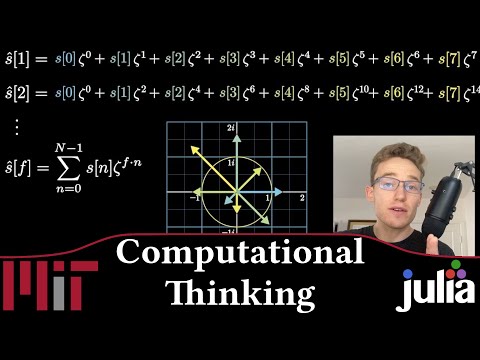Description:
Explore the Discrete Fourier Transform (DFT) in this 35-minute video lecture from MIT's 18.S191 Fall 2020 course. Dive into the fundamentals of DFT, its application in sound analysis, and its implementation using Julia programming language. Learn how to manipulate time series data from sound recordings, visualize waveforms, and understand the effects of frequency. Compare the Discrete Fourier Transform with the Fast Fourier Transform (FFT), plot FFTs, and analyze musical overtones. Discover the mathematical definition of DFT, visualize it in the complex plane, and grasp the concept of Fourier transform as a circular walk. Implement DFT in Julia, explore array comprehension, and compare DFT results with FFT. Gain insights into computational efficiency, pre-computing techniques, and the use of OffsetArrays for zero-based indexing. Conclude with an understanding of the computational complexity differences between DFT and FFT, and explore DFT as polynomials.

Understanding the Discrete Fourier Transform - Week 14
Add to list
#Engineering
#Electrical Engineering
#Signal Processing
#Discrete Fourier Transforms
#Computer Science
#Algorithms
#Computational Complexity
#Mathematics
#Complex Numbers
#Fast Fourier Transform